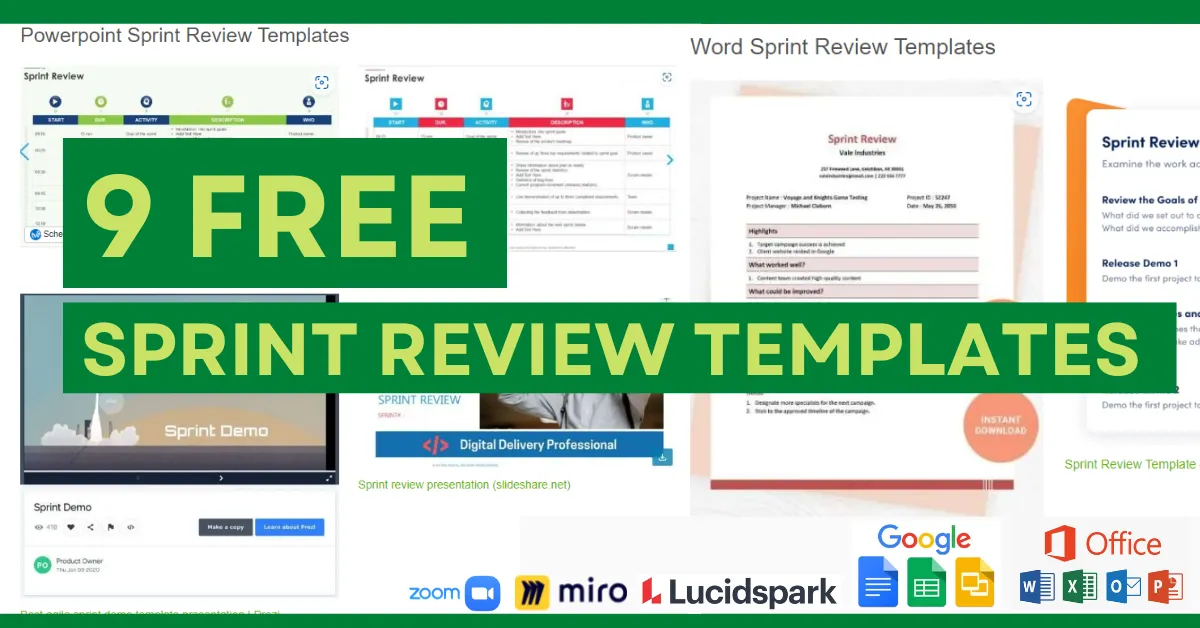
A sprint review is a scrum event in which the product backlog is reviewed, and stakeholders give feedback by providing transparency on the progress and performance of the product. This sprint is a set period, typically one to four weeks, during which the team works on specific tasks or objectives.
This is why having a sprint review template saves time.
This event is conducted at the end of each sprint and is attended by the scrum team, product owner, and other key stakeholders. The team shows what they have completed during the sprint, and the stakeholders give feedback on the product.
As an essential part of the Scrum process, the primary purpose of the sprint review is to ensure that the product backlog is still relevant and that the product is on track, as they provide a chance for the Scrum team to inspect the product increment and adapt the product backlog if necessary. The stakeholders should accept or reject the product backlog items demoed in the sprint review. The decision to accept or reject the product items is based on their value, priority, and the definition of done. If the stakeholders have any questions or comments on the product backlog items, they should be addressed in the next sprint.
Suggested article: 17 Sprint Retrospective Examples for Agile Teams
Sprint Review Purpose
The main purpose of the sprint review is to validate the sprint goal and improve the backlog for the next sprint. The scrum team and stakeholders attend the sprint review.
During the sprint review, the team presents the work they completed during the sprint and demonstrates any new features or functionality that was delivered. Also, the team will discuss any challenges or obstacles that were encountered during the sprint, and they will need to discuss how they overcame them.
The sprint review allows the team to showcase their achievements and learn from their experiences. It also will enable stakeholders and customers to provide feedback on the completed work and suggest areas for improvement or new directions for the project.
The team also discusses ways to improve the backlog for the next sprint. After the sprint review, the team updates the backlog and starts the next sprint. Overall, the primary purpose of a sprint review is to review the work completed during a sprint, discuss any challenges or issues that arose, and provide an opportunity for the team to learn from their experiences and improve their performance in future sprints. The essential purpose and goals of the sprint reviews are:
- Inspect the result of the sprint
- Gather feedback from stakeholders
- Improve the backlog
During the sprint review, the team will:
- Present the increment
- Demo the increment
- Discuss the sprint
- Gather feedback
Prepare for the Sprint Review
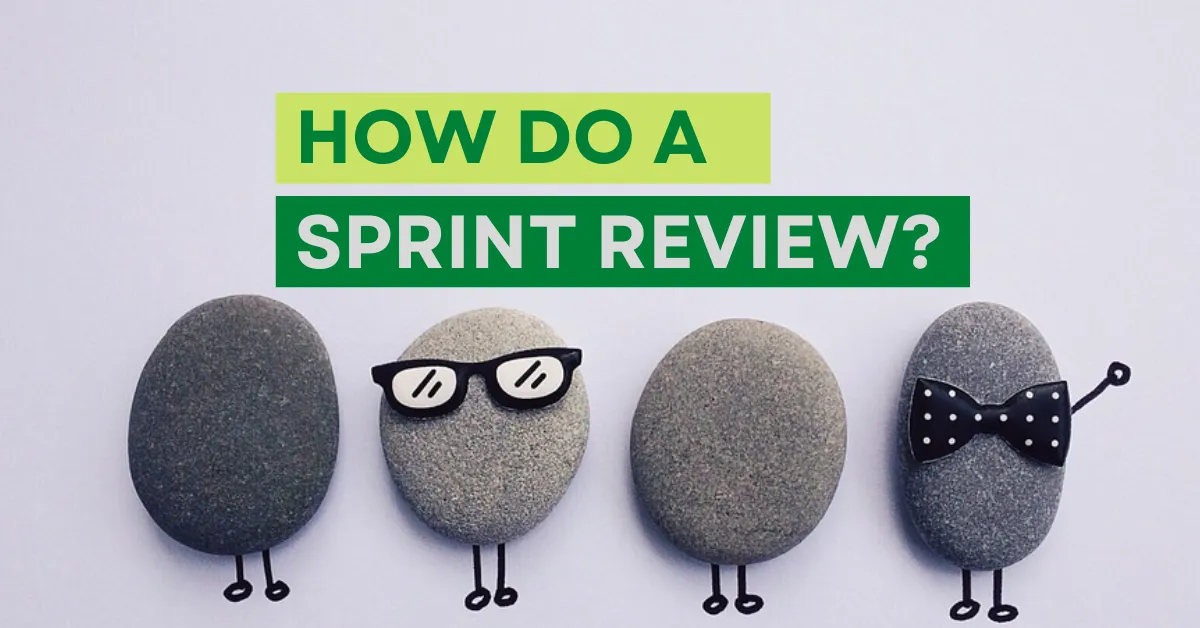
Before the sprint review, ensure you have all the necessary information and materials, such as a demonstration of the work completed during the sprint, a review of the project’s progress, and a plan for the next sprint.
Invite the key stakeholders
The sprint review should include the development team, the product owner, and other stakeholders interested in the project.
Start the sprint review
Begin the sprint review by briefly reviewing the project’s goals and objectives and the work completed during the sprint. Then, demonstrate the new features or functionality developed during the sprint and discuss any changes to existing features.
Discuss the progress of the project
Review the project’s overall progress and discuss whether it is on track to meet its goals and deadlines.
Review the quality of the work
The sprint review is an opportunity to assess the quality of the work completed during the sprint and identify areas for improvement.
Review and refine the plan for the next sprint
Based on the progress made during the current sprint and any changes that need to be made to the project, involve the development team and the product owner in this process and ensure that everyone is aligned on the goals and objectives for the next sprint.
What should a sprint review contain?
A Sprint Review is an opportunity for the Scrum Team to demonstrate the increment of work they have completed during the Sprint to the wider project stakeholder group and reflect on what went well and what could be improved. As such, the content of a sprint review will typically include the following elements.
- The team’s performance during the sprint. A discussion of the sprint’s key accomplishments: this could include the completion of specific tasks, the delivery of new features or functionality, or the resolution of critical issues or challenges.
- The product owner’s feedback on the team’s performance and suggestions for improvement: This could include feedback on the team’s communication, collaboration, or problem-solving skills, as well as recommendations for how they can improve their efficiency or effectiveness
- The product increment. Discuss any action items or follow-up tasks identified during the sprint review. This will provide a clear action plan for moving forward and ensure the team progresses towards its long-term goals.
Powerpoint Sprint Review Templates
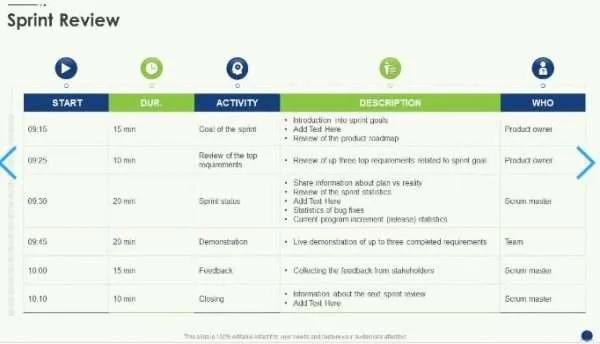
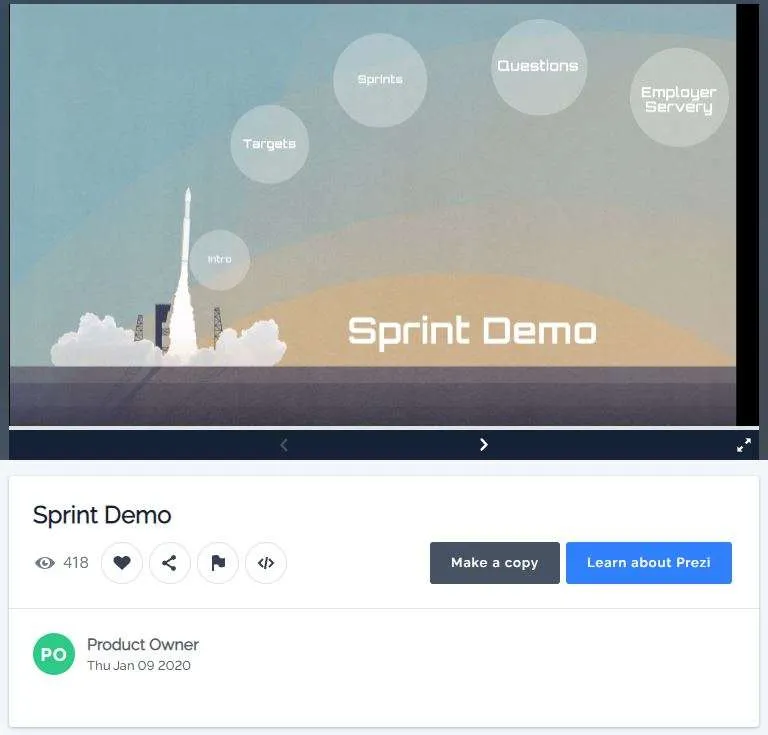
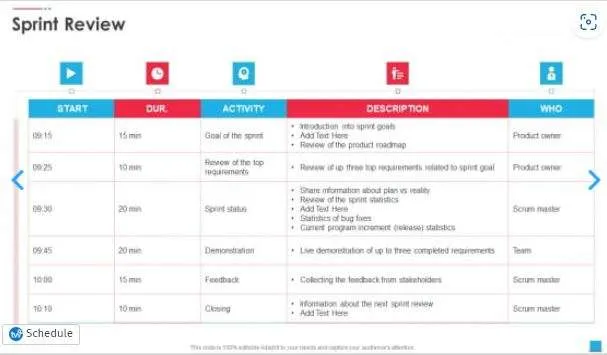

How many hours is the sprint review?
The sprint review is a time-boxed event that should last no more than four hours for a two-week sprint. That is the general rule, but it may be adjusted for longer or shorter sprints. The maximum time that should be spent on a sprint review is four hours. This includes time for the team to present their completed work, time for the stakeholders to provide feedback and time for the team to reflect on what was learned during the sprint.
The 4-hour time limit is based on timeboxing, allocating a fixed amount of time to a specific activity. Timeboxing helps ensure that an activity is given the attention it deserves and does not spiral out of control. It is essential to mention that a sprint review lasting more than 4 hours is likely ineffective and counterproductive.
In particular, the Scrum Team will present the increment to the stakeholders. The stakeholders will then have an opportunity to provide feedback on the increment, which the Scrum Team will use to plan for the next sprint.
If your sprint review is regularly going over 4 hours, it is essential to take a step back and assess what is causing the problem. Is the scope of the sprint review too large? Are there too many stakeholders involved? Is there a need for more structure and planning?
Answering these questions will help you identify the root cause of the problem and take steps to fix it.
Sprint Review Email Template
To write a sprint review in an Agile project, you should start by summarizing the main objectives and results of the sprint, discussing the key accomplishments, addressing any challenges or obstacles, discussing any action items or follow-up tasks, and providing feedback and suggestions for improvement. This will provide a comprehensive and constructive review of the sprint and help the team learn from their experiences and improve their performance in future sprints.
One of the most essential parts of a Sprint review is the agenda. This agenda should help the Scrum team, and stakeholders evaluate the product increment and discuss any necessary changes to the product backlog.
Some steps that may help you to start are:
Start by summarizing the main objectives of the sprint and the results achieved.
This will provide context for the rest of the review and help readers understand what was accomplished during the sprint.
Review the product backlog and product increment goals.
Discuss any action items or follow-up tasks identified during the sprint review and explain how they will be addressed in future sprints. This will provide a clear plan of action for moving forward and ensure that the team is making progress towards its long-term goals.
Discuss the value delivered during the sprint and the obstacles.
Playback the sprint, discuss what was encountered during the sprint, and explain how they were addressed or overcome. This will provide insight into the team’s problem-solving abilities and ability to adapt to changing circumstances.
Ask questions and provide feedback to the Scrum Team
Discuss openly performance and suggest areas for improvement. This could include feedback on the team’s communication, collaboration, or problem-solving skills and suggestions for improving their efficiency or effectiveness.
Word Sprint Review Templates
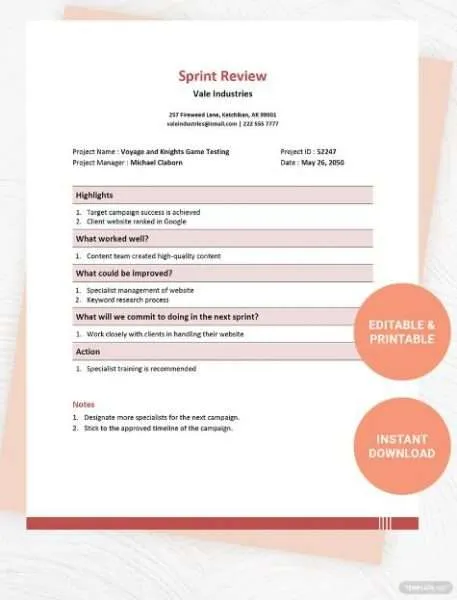
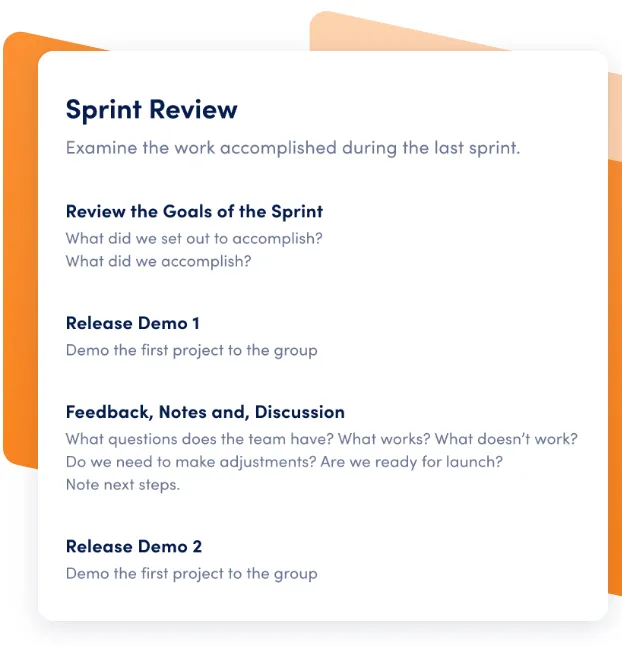
Scrum Ceremonies vs Sprint Review
Sprint Review vs Retrospective
The main difference between a Sprint Review and a Retrospective is in terms of the format and structure of the meetings, the sprint review is typically a more formal and structured meeting, with presentations and demonstrations of the work completed during the sprint. On the other hand, the sprint retrospective is often a more informal and interactive meeting, with activities such as brainstorming sessions and discussion groups to facilitate learning and improvement. We have collected 9 Sailboat Retrospectives online that you can use, which helps determine what is different from a sprint review.
Two types of meetings are held at the end of each sprint in Scrum: the sprint review and the sprint retrospective. Both meetings serve different purposes and have different objectives. It’s important to understand the differences between the two to make the most of each meeting.
For example, the sprint review is a meeting between the Scrum team and any stakeholders or customers interested in the work completed during the sprint. The objective of the sprint review is to discuss the sprint’s progress and demonstrate the work that has been done. The product owner will then give feedback on the job done and what can be improved.
On the other hand, the sprint retrospective is a meeting attended by Scrum team members only. The objective is to discuss what went well and what can be improved and identify actions to improve the team’s performance.
Sprint Review vs Showcase
The main difference between a sprint review and a showcase is the format and structure: A sprint review is typically a more formal and structured meeting, with presentations and demonstrations of the work completed during the sprint. On the other hand, a showcase is often a more informal and interactive, with opportunities for the audience to engage with the product or service and ask questions.
In Agile software development, a sprint review is a meeting held at the end of a sprint to review and demonstrate the work completed during the sprint. This meeting typically involves the development team, the product owner, and other stakeholders interested in the project. The purpose of a sprint review is to inspect and adapt the work completed and plan for the next sprint.
On the other hand, a showcase demonstrates the work completed during a sprint or series of sprints. This demonstration is typically more formal than a sprint review and is often attended by a larger group of stakeholders, including executives and other decision-makers. The goal of a showcase is to demonstrate the progress made on the project and to gather feedback from stakeholders.
While the team and stakeholders attend a sprint review and focus on reviewing the work completed during a sprint, a larger audience attends a showcase. It focuses on demonstrating the value and capabilities of the product or service.
Iteration Review vs Sprint Review
The main difference between the sprint review and iteration review is in structure. They can be similar, with presentations and demonstrations of the work completed during the iteration or sprint and discussions of any challenges or obstacles encountered. However, the sprint review may be more formal and structured than the iteration review, depending on the needs of the project and the audience.
At the end of every sprint, the team should reflect on their work and process. This is done in two ways: the iteration review and the retrospective review. Both are important, but they serve different purposes.
The iteration review focuses on the work completed in the sprint. The team will go over what went well and what could be improved. This type of review aims to identify any issues that must be addressed and ensure that the team is on track to meet the sprint goal.
The retrospective review is focused on the team’s process and how they can improve it. It is a meeting held at the end of each sprint to reflect on the sprint as a whole and identify areas for improvement. This type of review aims to determine what went well and what could be done better in future sprints.
It’s important to note that neither of these meetings is meant to be a blame game. The goal is always to identify areas for improvement so that the team can be more effective in the future.
A Real Sprint Review Example
Shane Drumm, holding certifications in PMP®, PMI-ACP®, CSM, and LPM, is the author behind numerous articles featured here. Hailing from County Cork, Ireland, his expertise lies in implementing Agile methodologies with geographically dispersed teams for software development projects. In his leisure, he dedicates time to web development and Ironman triathlon training. Find out more about Shane on shanedrumm.com and please reach out and connect with Shane on LinkedIn.